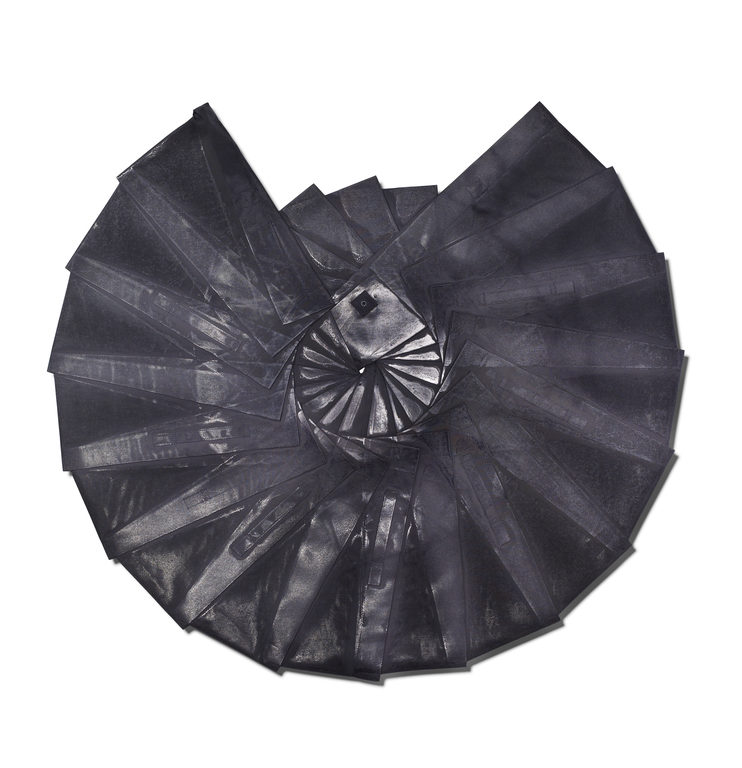Issey Miyake has always put innovation at the core of his fashion. Innovation in the choice of materials, in the making process, but also in how to wear his designs. In 1988 the Japanese designer launched Pleats Please, his legendary line made of industrially-pleated polyester set by heat press. Since then, he has continuously experimented with the pleating technique. In 2007 Miyake opened Reality Lab, a research and development department of his company, where he has worked closely with textile engineer Manabu Kikuchi, pattern engineer Sachinko Yamamoto, and a team of fashion designers. His experimental approach is well exemplified by his 132 5. project, a limited series of modular garments branded Reality Lab and launched in August 2010.
This elegant ensemble, composed of a pair of pants, a top, and a belt, belongs to this unique collection. From a folded geometric fabric to a wearable attire, his garments (blouses, skirts, pants, and dresses) spectacularly unfurl in three-dimensional shapes. For this line Miyake collaborated with Mitani Jun, a computer scientist from the University of Tsukuba, Japan, who develops mathematical formulas using only a single uncut folded sheet of paper to create complex three-dimensional objects. The result is an architectural collection of inventive and playful garments that revisits the traditional technique of origami. According to Miyake, “132 5. begins with one piece of cloth manipulated through three-dimensional molding that can be returned to a two-dimensional plane and creates a fifth dimension when the garment is worn and comes to life.”
The transformative aspect of these clothes is reinforced by the use of a recycled polyester fabric. The polyester PET plastic bottles are collected from local industries. They are then chemically transformed into new fibers by Teijin Fibers Ltd., a Japanese leading high-technology textile mill. Finally the recycled polyester fabric is treated to offer a soft finish and transfer-printed to obtain a hologram-like surface. Economy of means, craftsmanship, and technology are key words to describe Miyake’s creative vision. With his 132.5 concept, he puts sustainability at the core of his forward-thinking design process with the ambitious goal to create fashion of the future.

Pants And Top, 132 5. Issey Miyake, 2012–13; design date 2010; Designed by Issey Miyake and Reality Lab.; Japan; polyester from recycled pet bottles; pants: 63.5 x 65.4 cm (25 in. x 25 3/4 in.) top: 43.2 x 45.1 cm (17 in. x 17 3/4 in.); Gift of Miyake Design Studio; 2014-26-3-a,b
About the Author
Magali An Berthon is a textile researcher and designer, focusing in particular on world textile crafts and sustainable fashion. After an MFA in textile design in Paris, she studied textile history at the Fashion Institute of Technology NY on a Fulbright fellowship in 2014. Since June 2015, she is a curatorial fellow at the Textile Department at Cooper Hewitt, Smithsonian Design Museum.
Scraps Stories
This post is part of the blog series Scraps Stories dedicated to exploring sustainable textiles and fashion, in relation to the exhibition Scraps: Fashion, Textiles, and Creative Reuse.
